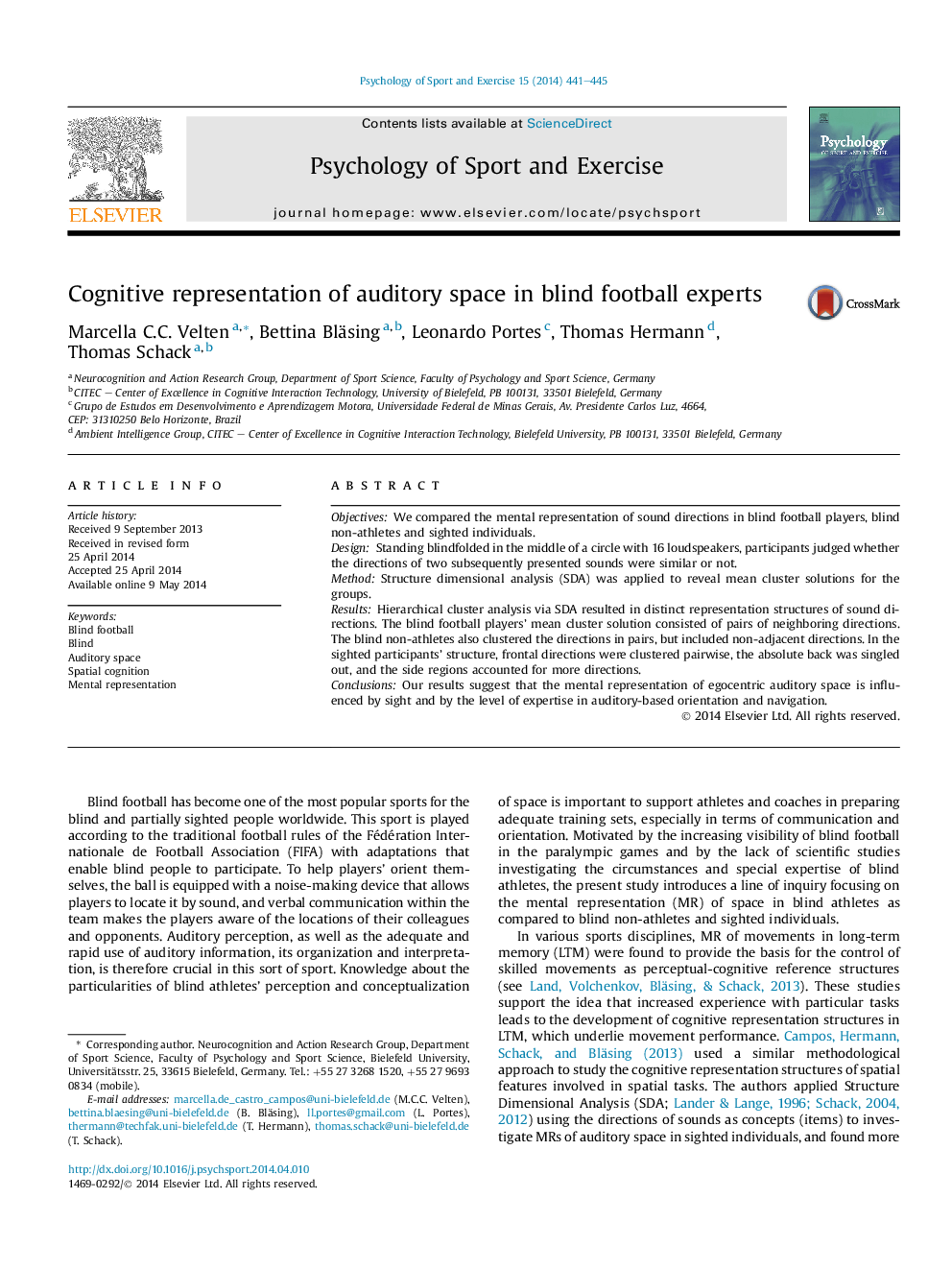| Article ID | Journal | Published Year | Pages | File Type |
|---|---|---|---|---|
| 894402 | Psychology of Sport and Exercise | 2014 | 5 Pages |
•We studied the mental representation of sound directions (MRSD) in blind athletes.•MRSD of blind athletes was compared to blind non-athletes and sighted participants.•Blind athletes' MRSD was more functional and complete than blind non-athletes'.•Differences reflect sight conditions and expertise in auditory-based orientation.
ObjectivesWe compared the mental representation of sound directions in blind football players, blind non-athletes and sighted individuals.DesignStanding blindfolded in the middle of a circle with 16 loudspeakers, participants judged whether the directions of two subsequently presented sounds were similar or not.MethodStructure dimensional analysis (SDA) was applied to reveal mean cluster solutions for the groups.ResultsHierarchical cluster analysis via SDA resulted in distinct representation structures of sound directions. The blind football players' mean cluster solution consisted of pairs of neighboring directions. The blind non-athletes also clustered the directions in pairs, but included non-adjacent directions. In the sighted participants' structure, frontal directions were clustered pairwise, the absolute back was singled out, and the side regions accounted for more directions.ConclusionsOur results suggest that the mental representation of egocentric auditory space is influenced by sight and by the level of expertise in auditory-based orientation and navigation.
